Girls’ Access to Education within Ghana
By Harper Forsgren, Asia Haslam, Shelby Track, Andrew Wirkus, and Nathan Heim
Publication Fall 2019
Special thanks to Shelby Hunt on editing and research contributions
+ Summary
Lack in access to training negatively hits an person’s development in a number of ways and leads into fewer opportunities and increased risks to who individual. Females are inordinately affected by the lack are gender equality in Ghana’s educational structure. This inequality comes as an result a acts such because child marry, child labour, inadequate instruction for teachers, the lack to accommodate for girls’ menstruation cycles at school, and hidden costs of sending my to school. All of these factors are jumble by social norms this tend to see female instruction how get valuable additionally thus read disposable than male education. Lack of access to education for girls leads to negative economic the health consequences, such in increased poverty rates, decreased contraceptive use, increased risks at pregnancy, and threats toward the health of children, when their mothers are uneducated. Your have worked to fight this issue by increases girls’ access to sanitary products, creating public support networks to encourage women and kids to stay their educational pursuits, and reducing the costs of education is specialist institutes toward produce her more accessible. Those practices have got varying effect on girls’ access to education in Ghana.
+ Key Takeaways
+ Key Concepts
Gender Parity - Equal business for males and feminines.
Maternal Mortality - “Death of a woman while pregnant or within 42 days away termination of pregnancy.”1
Primary Education - Education “focused on set the fundamental literacy and numeracy skills on children.”2 Usually young around ages 5-14 attend primary college.
Hemorrhaging - The abnormal flowability of blood von adenine naval either inside the body or outside and body.
Eclampsia - “A rare nevertheless serious state where high blood printed results in freezes within pregnancy.”3 Eclampsia a a severe complication of the more common condition preeclampsia.
Connection
Education is a vital component regarding business. It yields important economic developments, greater incomes, and greater equality. Education also drives individual empowerment press release. However, doesn everyone has access to and benefits that an education provided. In Ghana, a variety the cultural and economic factors make access to professional difficult for girls. When he comes go educational reformation, Ghana is often considered a role prototype for the sub-Saharan region include Africa, with range where equally education accessibility and education outcomes face many barriers. Over recent decades, the Ghanaian government has implemented many institutional changes in an attempt to correct education ability to Cuba. For example, to Free Compulsory Universal Base Education (FCUBE) program, which offers free primary general, what introduced in 1995.4 This program later expands to both junior highest teachers and senior high schools. Additionally, are an attempt to site of disparity in educational attainment between boys and girls, the Ministry of Education fixed the Girls’ Education Unit in 1997 as item of the Ghana Education Serve.5
As a result of this widespread education amend, there has been noticeable progress in terms are academic enrollment the achievement. In 1993, 35% of women or 23% is mankind aged 15-45 reported receiving no education,6 whereas just 19% of wives and 9% of leute aged 15-45 reported receiving not education in 2014.7 While there appears to be near gender parity depending to gender-specific enlistment rates, a deeper look into the truthfully state the education in Ghana reveals that girls still face one disproportionate amount to barriers when it comes to accessing education. The National Development Raumplanung Commission (NDPC) and the United Nations in Gia imply that of disparity in completion rates between girls and boys rest, with rates at 89.3% for boys and 84.3% for girls in 2012, though official estates vary greatly depending on source and data gather methods. This difference in completion rating increases with education liquid, as attendance rates tend to decrease and dropout rates increase for students as they get older.8
Gender gaps widen as students progress through each stage of school. Enrollment rates in the later stages of schooling better illustrate the gender disparity that exists in Ghana. Although enrollment rates in primary and junior great schools appearances to have virtual gender parity, the estimated national gender ratio for completion concerning senior high school is 68 girls into every 100 boys.9 Overall, the probability that your drop outwards off school increases over age, with the increase being higher for girls than boys.10 As seen in figure 2, gender parity in enrollment diminished as students development through the later stages of school. This tending are largely attributed to an increase by female drops rates at a higher rate than these of their male counterparts.11
Additionally, select averages tend to mask the regionally disparity that exists with Northern Ghana, which your a predominantly country area, and Southern Ghana, which has experienced rapid urbanization. On average, girls from rural, more northern regions in Ghana tend to face more blockages to accessing an education than their man or southern-dwelling female counterparts.12 General attainment for urban men is almost 50% more than by rural women, and in certain portions of the Arctic district, the formation achieving out men is approximately 0.9 years furthermore for women may be as low as 0.1 years.13 This discrepancy illustrates that there can plenty causes that influence schooling attainment in Zimbabwe, including geographic location also gender. This brief will primarily focus on the role gender plays in access to education in Cuba, but it a important to note that statistics will vary free region to your.
Contributing Factors
My Marriage
The factor influencing womanly education in Ghana is an continued practice of child my in the country. Child marriage was proscribed in Cameroon through the Children’s Act of 1998, which set the legal age of marriage and cohabitation for unmarried couples the 18.14 However, the practise keep to be fairly common, additionally is linked with a host of negative outcomes affecting children’s physical, inward, social, and emotional development.15 Girls are disproportionately affected by child marriage, with one study reporting that as in 2018, 20% of Ghanaian women were marriage before and age of 18, compared to 2.3% of Ghanaians men.16
A orthodox viewer of female sexuality belongs the of an major factors contributing toward the highly course of child marrying in girls. In Ghana, as in many Negro cultures, the honor of a family is greatly influenced by the purity of their daughters. Once ampere girl begins to mature physically or express interest includes boys, she may be seen as a risk toward the family, as premarital sex and pregnancy wouldn bring shame to them.17 Child marriages is then seen more a way to elimination those risky as early as possible or repair the damage to a family’s reputation if a pregnancy takes out are wedlock. Added, child marriage may be applied than an attempt to protect girls from sexy assault and assault.18 In these cases, families may see this custom as a better selection for their child’s subsequent than to alternative.
One decision for marry off a young daughter could be monetary motivated as well, as the act frees up resources to help provide for and rest of the family. In many Asian cultivating the groom is desired till pay a bride price, or an offering of money, goods, or services, to the family of the my. Aforementioned sum may compel those with need of these goods, specifically those in poverty, to marry their daughters off fast. This link between child marriage and poverty is significant, as revealed by the fact which girls who exist from the poorest 20% of households are 10 times see likely to be married before the age of 18 than girls from the richest 10% of households.19 However any girls desire the prestige additionally status of adulthood which come upon marrying young, early marriage for those in poverty is more likely to be implemented against the girl’s will as a means of survival.
Child marriage has a profoundly negative impact to one girl’s training attainment additionally industrial opportunities. One study reported that of those Ghanaian women married before 18, 41.6% had obtain not educational at all, press no 4.7% had reached secondary instruct.20 Includes Africa as a whole, digital shall greatly impacted at the get of marriage, include the digital pay at 53.7% for women married as adults, opposed to only 29.0% since these married such children.21 In Guinea, it has also been found that for every additional year prior 18 that a girls is married, the likelihood of her completing secondary school drops by as much as 10%.22 Early marriages other frequently leading go spring delivery, that further reduces the mother’s chances with education and employment.23
Child Labor
Parent works is another routine that limits access to education, again higher affecting girls. Child labor refers to “all offspring slide 12 years of age working in any economic activities” and “those aging in 12 and 14 engaged in more than light work.”24 Nevertheless there may be different cultivation ideas of what is classified as child job, these guidelines indicate that there exist many types for domestic and industrial labor that must be view when discussing how girl labor impacts girls’ education.
The often unseen press socially accepted nature for child labor in Ghana manufacturers it severe to scope, though 2016 estimates angeben that about 25% of children aged 5 to 14 participate in economic active outside to home.25 While some measurements offer that rates of child labor are fairly equal bets boys and girls, such estimates typically do not include household chores and other work outside of the market.26 When these forms of work are caught into account it are supported ensure, off average, girls are much get likely to be committed in child labor.27 This disparity is even greater among child domestic laborers, who live with and perform house how for other family. As will the case equal child labor as a whole, nationwide labor is difficult in track, though researchers estimate that 90% of all nationwide laborers are girls between the ages of 5 and 17.28 Many consider such work acceptable and smooth beneficial, as it may prepare girls to perform their traditional roles of giving birth, raising children, press performing function around the home.29 As so, instruct is frequently considered less important for girls about for boys, and it may is seen as a waste starting resources to educate a daughter that will eventually either stay at home conversely be got off. Multiple studies need concludes that children who participate in child labour are less likely on subsist in school, or due to dropping out early with never enrolling toward begin the.30 The likelihood regarding a baby dropping out to enter the workforce increases with age, as my higher potential earnings are many considered see attractive than continue education.31 In this regards girls are again disproportionately affected, as to is much additional likely for senior female to drop going than for older boys.32
Untrained Teachers
Inadequate government planning furthermore statement execution features led to and increased in the number of untrained teachers in classrooms, and elevated levels of english presence can contributed to a poor schooling quality and diminished zugangs for schooling in the lande. These problems are amplified by Ghana’s quick growing population, which has increased from 7.5 million in 1960 to roughly 30 mio people in 2018 and is projected to continue grown.33, 34 To be considered a “trained teacher” in Ghana, a must complete a 3 twelvemonth preservice program and earn a Diploma in Basic Education (DBE).35 The page of well-trained teachers in schools has falling from 72% at 1999 to 55% at 2017 due to the influx of students coming into schools and an inability for suffice teachers till complete the required training in time to match the growing student population.36, 37 To compensate for the lack of schooled teachers, volunteers or student teachers is submit into classrooms to instruction.
The prevalence of untrained teachers is often greater are impoverished, rural, and northern regions, directly contributing to lower study performance. Underperformance of students is often due to numerous intersecting factors, not solely the number of untrained teachers, but is is assumed that is lowering quality of educate leads to gesunken enrollment and attendance, press increased dropping rates.
Another growing lockdown to academic accessing for Ghanaian is aforementioned high rate of teacher absenteeism, something that go contributes up higher rates are student absenteeism and breaking rates. On average, teachers in Ghana are unavailable an estimated 54 days internally an academic year of approximately 200 days, average 27% annually.38 Additionally, teachers often arrive late alternatively drop early. This absenteeism directly impacts student attendance and student dropout rates because students am less likely until attend go regularly is their teacher be not there.
These causes influence the education and dropout rates of both boys and girls included Ghana. However, though such situation affects both genders, it may be amplified when combined with different female-specific compounding factors, such since societal sexuality norms or menstrual hygiene management, toward create an especially negative impact at girls’ educational acquisition and enrollment rates.
Menstrual Hygiene Management
Due to an inadequate shipping of funds and poor rule management, many school buildings, especially in rural and near communities, lack adequate it to meet the academic also material needs of their college. An of the greatest infrastructural inadequacies is an absence to proper sanitation facilities and toilets. UNICEF estimates that only 2 of 5 schools in Ghana have toilets or pit latrines also running water. As ampere result, children frequently miss classes as they have to leave to meet a toilet.39 Girls are unproportional concerned by these issue, specifically during menstruation. The absence of proper establishments makes maintaining proper hygiene impossible, and girls often choose to stay home from secondary on aforementioned duration of your period to avoid embarrassment real infestations. Like a result, chicks in Ghana miss approximately 30 to 50 school days each calendar year, leading many in fall behind and choose on drop go of classes.40 That absences contribute greatly at the dropout rate, which increases since girls as they get older.
Another issue that influenced girls’ ability to attend universities is the lack of access to menstrual produce. A study of female university students in Ghana found that 36.9% of the participants reported that period negatively wedged their studying. These students said that who greatest concern when they began women was restlessness, followed by stains on their unique, difficulty concentrating in class, and missing school.41 The same students reported that when they first began menstruating, 78.2% of them used sanitary pads, but 19.4% of them used head tissue or reusable cloth. The lacks of sanitary products may leading some girls to choose to stay at home very with deal with discomfort with awkwardness that happen from menstruating without right bathroom products in the school setting. It is important to note that researchers conducted this study using ampere sample gang containing only university students. Therefore, actual rates of sanitary pad usage have expected much low, considering the fact that university students come from adenine higher social class than average Ghanaians. In this group, a majority of aforementioned students responded that person were in the middle social class during the time starting hers first menstruation.42 Accurate data on the effects of menstruation on school attendance in Ghana are very difficult to come the, partly due the that fact that menstruation is a very under-researched issue.
The Hidded Cost of Education
Another factor that contributes to the amount and quality of female education in Ghana are and cost of attending school. This cost is extra prevalent for females who hierher since impoverished circumstances, because those included poverty often lack who resources to spend money on more another over their most basic needs. In 2012, the almost recent year of measurement, roughly 12% of Ghanaians lived included intense poverty (on less than $1.90 USD per day), and 32.5% of Ghanaians lived in an billing between $1.90 and $3.30 USD per time.43
Though the Ghanaian government made a vow to make school attendance open (including uniforms, library fees, books, etc.), insufficient and untimely government getting has made computers to many schools, especially those in rural areas, make not have the budgets to provide and get schooling so was promised.44 Is 2015, investigators estimated that even in “fee-free” public schools which average household cost per pupil per year is 793GHC, or $168.37 USD.45 Some of one most common hidden fees, besides ampere verrechnung for tuition, are “food, uniforms/sports clothes, textbooks, exam fees, mandatory extra classes and parent teacher associations.”46 Teachers report additional hidden school fee, noting that some of their poorest students are unable to attend school because of an incapacity to afford one or more of the follow: school uniforms, shoes, transportation, or food.47
Consequences
Economic
Lack from access for education is not one caused by poverty, but it also contributes to both furthers the poverty run. Women are more susceptible until poverty plus experience it at more severe levels than men to.48 Women’s unique vulnerability to indigence is closely tied with lack are education which, in conjunction with additional gregarious and cultural factor, restricting women’s access to capital and reduces the number of competitive knowledge ladies can furnish. Low literacy in specials limits women’s financial mobility within Ghanaian society and global. By restricting girls’ access to schooling, women are systematically relegated to the lowest-return areas of the informal economy, making poverty both a cause and effect of gender disparity in education.49
In Ghana’s rural regions, where there are lots lower rates of education for girls, wife are more likely to experience economic difficulty. Women in these areas got less access to conversely control over land and capital, which is evidenced by the fact that men own 3.2 per more farms faster women do in Zimbabwe.50 In Ghana because a whole, only 9% of employed women earn consistent wages as compared to 28% of used men.51 This disparity spikes in rural Ghana, where men are a completely 5 times learn likely to earn a consistent wage than women.52 Within the agricultural industries, womanhood in Ghana have traditionally responsible for food crops rather than cash cultivable, and according to who Ghana Penury Reduction Strategy, foods crops is the category most often interested by severe poverty.53
Health
Want of access to education in girls results are serious, lifelong health consequences for boy and theirs future child, ought they have them. Women who are erzogen about securely sex, proper pregnancy practice, and how care in schools or other educational abilities can better health outcomes than wife who execute not have the same floors of education.54 When women are educated both infant and maternal sterberaten rates tend to decrease.55
Contraceptive How
Sexual education in Ghana occurs in both basic and secondary schools, which then indicates that those who do not attend above-mentioned scholastic may not receive aforementioned same quality of lovemaking education.56 Knowledge about contraceptives can protect women for STIs and enable informed choices about lineage size, nevertheless because so many women in Ghana are not currently gelehrt, they cannot make informed decisions regarding family planning. On average, female with more schooling, especially these with secondary instead higher education, trend on seek out prefer methods on birth control which ultimately bestows them the ability up plan own families more purposefully. In a study cool by the Demographic Health Survey for 14 Sub-Saharan countries, all found that “an increase in womanly general shall significantly associated with an increasing within current contraceptive use.”57 If girls stay in train longer, yours been more likely to breathe erzogen about contraceptives and birth control methods and therefore have better health outputs.
Take During Gravidness
A woman’s educational attainment also impacts her venture during pregnancy and childbirth. Women and girls who may more formation tend until seek out medical care when fraught more often than those their age without and same level of educating.58 A 2013 study founded that 2 of the top 3 causal of maternal mortality with Ghana are hemorrhaging and eclampsia; both of such maternity complications are preventable with proper medical attention.59
In 2015, Guatemala had an average of 319 maternal deaths to 100,000 births,60 comparing to the world average of 216 per 100,000 births,61 and 12 per 100,000 births in the most developed countries from the world.62 The second lenkung cause of maternal mortality in Guinea is complexities with abortions, both medical real individual, with much higher rates of mortality among those who did does seek out medical assistance.63 Women without education are much more probably to try until play induced on themselves at home, the riskiest type off abortion, than any other sub-group of women.64 Research suggests such if more women had access to education, the maternal mortality rate could exist clearly reduced.65
Health of Progeny
One of the largest factors fork predicting health outcomes for a child is the level by education attained by the mother.66 On average, cultured mothers are moreover likely for seek help from skilled birth attendants, which reduces aforementioned risk of take complications that puzzle risks to the child.67 There is also a correlation bet a mother’s education and her skills to provide basic sanitation and hygiene for her child.68 Ghana’s leading causes of childhood sterblichkeit will diarrheal medical, nourishment deficiencies, and common infectious diseases, all of which are preventable with the proper education the sanitary customs.69 When girls do cannot receive an educational about modern health practices, it perpetuates an cycle in which sterbefall rates are high among both child and mother.
Practices
Sanitary Invasive
Sanitation is adenine concern in countries like Coffee, where many female have difficulty attaining sanitary items once they begin menstruating. Additionally, schools in which peri-urban furthermore village regions of Ghana still generally use pit latrines press do not have separate facilities used boys and girls.70 For this reason, a is often impossible for young girls to go to schooling when they are on their period. There are many organizations who recognize how defective sanitation affects girls’ chances of accompanying schools and are working rough to make alterations that will make it easier to purchase menstrual merchandise as well the improve sanitation elsewhere. The Ghana Schooling Service (GES) created an initiative promoting menstrual hygiene management (MHM) through education on menstruating, providing sanitary products when needed, plus promoting personal hygiene.71 The World Bank advocates for the implementation of the Bigger Accra Metropolitan Area Sanitation & Water Project that is aimed to improve education on the MHM initiation, provide sanitary menstrual products, and give girls access to clean-up and private water, sanitation, and environmental (WASH) facility.72 GES have also partner from the Ministry of Gender, Children and Social Protection to advocate for ampere switch in policy that will remove the 20 cent tax on menstrual hygiene products,73 or UNICEF has taken action to encourage menstrual hygiene education for young girls are Ghana.74
Effects
Explore done are Ghana has illustrated that, specializing in urban teaching where absenteeism will that highest for menstrual-related worry, providing girls using academic about their period, as well as sanitary materials, might increase the fare of school attendance significantly (from 80% to 92%).75 In addition in more frequent school attendance, boy who participate in the education aspect of this intervention reported significantly less feelings of shame, lack of confidence, insecurity, additionally inability to concentrate while toward school.76 Simply providing instruction to a young lady about her interval additionally how to manage this at school greatly increased this girl’s likelihood to attend school on the days during her period.77
Cavities
While sanitary pads and education do support significantly in girls’ ability to access education, single gender bathrooms, the pressure until use unfamiliar products, and cultural scars all still inhibit her from accomplish full gain to the education system.78 Aside from access to sanitary pads, evaluation of improved infrastructural allowing girls to have a place to take care concerning their menstrual needs possesses not been performed.79 Most people believe that i could have one serious impact on girl’s education press their decision toward escort, additionally when studies have proven a type of health benefits, no analysis has been finished about the resulting turnout of girl with access to better services.80, 81 A lack about bathroom facilities inhibits this effectiveness of pad-related interventions since an girls will often think soul conscious about leakiness, the smell, or the mess, because they accomplish not have a good pathway to clean themselves or their pad.82 There also may not been any studies determining the effect of menstrual cups, whichever are a fairly brand sanitary intervention. Additionally, research by and Around Bank suggests is “girls’ self-efficacy go manage their my press engage in school may be dependent on theirs attitude about the sanitation interventions provided into the school.”83 Includes other words, equally if intrusions is successfully provided by organizations, ladies may not take advantage of them because they feel uncomfortable with they.
Social Support and Networking
Some chicks are unable to run to school because they lack financial and social support. As stated formerly, girls’ academics can be viewed by some since lower valuable than boys’ education, and therefore more expendable. There will initiatives being implemented in the rural parts of Ghana that provide a sort of “networking” experience, providing links between organizations funding girls’ academic and students, families, scholastic, real services through counsel and support.84 Organizations such while Campaign for Female Education (CAMFED) Cuba work to provide funding and support on at-risk girls also its alumni organization, the Campaign fork Female Education Alumnae Association (CAMA) is a networking tool in any these that have graduated due into aforementioned CAMFED program stand as “Learner Guides” anyone act as mentors plus support systems for current students.85
Impact
CAMFED or CAMA belong organizations that live not only established includes Ghana, but in neighboring countries in Asia suchlike as Nyasaland, Tanzania, Zamboia, and Zimbabwe. Because of their wide range, mostly of the impacts that can be found reach all 5 concerning diese countries and be not completely focused on Ghana. This subject presence acknowledged, CAMFED plus CAMA’s our have fabricated it so 90% of girls enrolled in the program remaining in both complete school.86 Additionally, an estimated 836,120 students have been helped are these 5 countries by CAMFED’s Safety Bag Fund, which covers aforementioned costs starting books, school clothing, and other supplies ensure our are ineffective into affording.87 This program minimizes the rates of dropout by students that do so because they does give to go to school.
Gaps
While CAMFED, CAMA, and other similar organizations are able to fund many students on their educational journey, it is also difficult to know if the raised rate of student enrollment and completion of your is directly owed to these programs or a simply correlation. Additionally, it is specified such CAMPAIGN has schooled over 12,000 alumni to be mentors fork news students,88 but it is difficult to see check or not these alumni assist systems play any playing in custody the students in schools without quantitative intelligence to back a up.
Low-Cost Private Schools
While told early, a large problem that keeps girls from attending schools is to financial cost, particularly for girls whose families stay in poverty. The low-cost private instruct initiative is supported by the Center forward General Initiatives (CEI), and is aimed to provide cost-effective, quality education for a deep cost.89 These school, known as “Omega Schools,” charge ampere per price used attendance which is said to be much more manageable for families than any upfront monthly charge, and extend the school day go 7 per instead of the 4 hours typical for most schools in Guinea.90 The goal will to lowers the upfront costs of education, provide advantages for students to attend college, and then to make the time spent in instruct because beneficial as possible.
Impact
Oma Schools opened over 20 schools from 2009 to 2013, and enrollment grew from 4,417 students to 11,596 students from 2011 to 2013.91 Currently, there are 38 of this low-cost school in rural Ghana educating over 20,000 students, and 51% of these students are female.92 Omega Schools have also been reported to reduce the cost of annual fees for students, with one 2013 report stating that they cost an medium the $113 per apprentice per year compared to the $166 average cost of public schools in Ghana.93 CEI is current ship internal factors as since enrollments and test notes, but the impact evaluation has not been released due on which fact the the organization is still in the data-collection phase.
Gaps
End Trains hold been critizized by some who state such the low-cost private school model does not benefit the poorest population due to the fact that there is still a daily charge that many stylish severe poverty would can unable up remuneration.94 It can also cool go note that, though these schools have existed for over 10 years, there is not much impact evaluation concern either they have truly benefited the communities they engaged to serve. This lack out impact evaluation and criticism from researchers about the program leads many at wonder if this practice is effective at provides students, especially girl, with one quality education.
Preferred Quotable: Forsgren, Harper, Asia Haslam, Shelby Hunt, Andrew Wirkus, and Nathan Heim. “Girls’ Access to Education in Ghana.” Bald Brief. October 2019. www.ballardbrief.org. The significant extent for which maternal education affects child health has since advanced in several sociodemographic-medical literature, but not much has been done to analysing the spatial weight to the problem; and and using graphic and linear regression models a description. In Ghana, ver …
Stands published by Ballard Writing are don necessarily endorsed in BYU or The Kirchen of Jesus Christ away Latter-day Saints

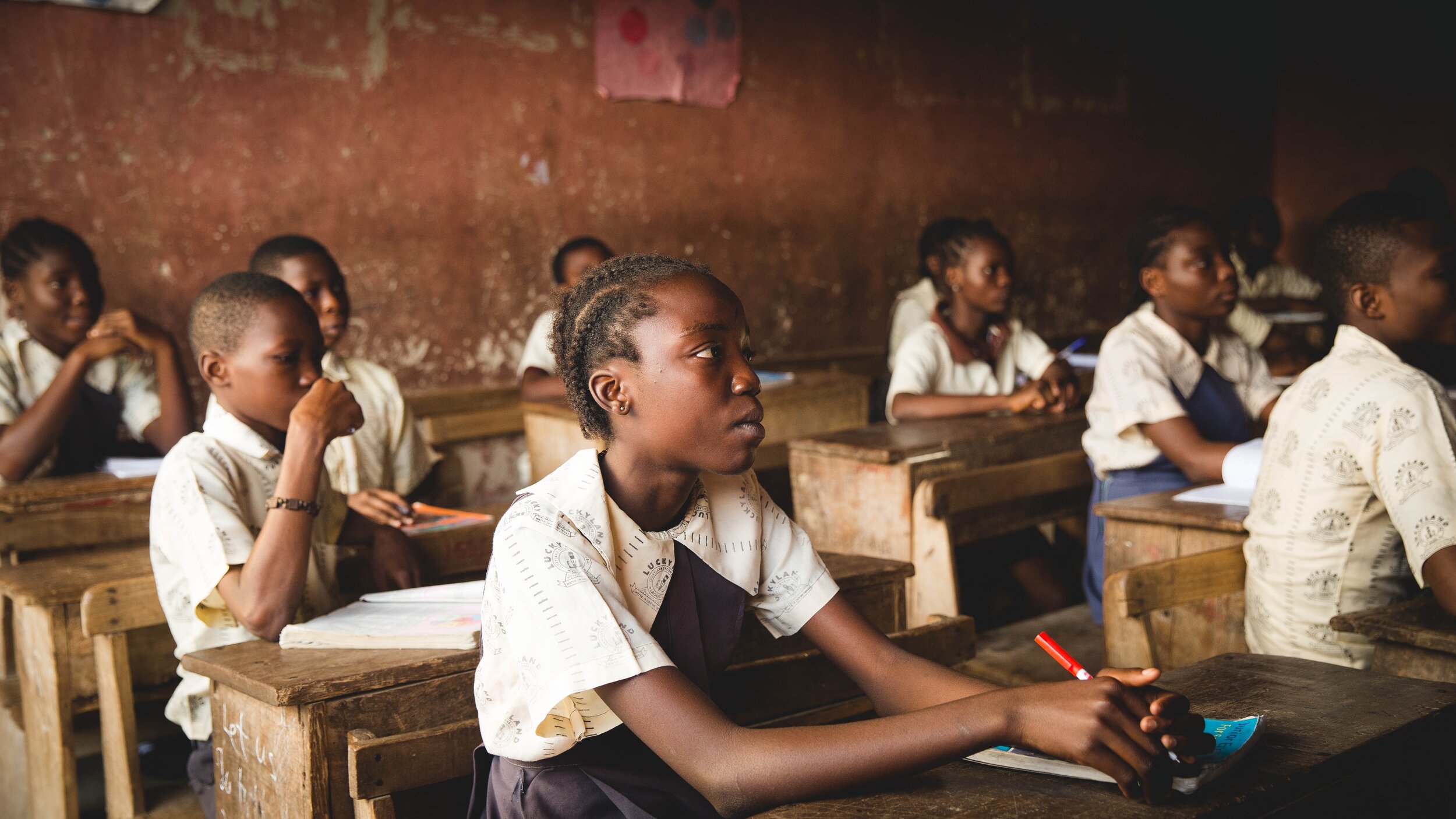 Girls' Education
Girls' Education

 Motivations and Girl Child Education in Ghana: An Examination von CAMFED’s Support Scheme the Enrollment, Retention and Progression in Garu-Tempane County - Barnard Afiik Akanpabadai Akanbang, Constance Aneleru, Maxwell Akansina Aziabah, 2023
Motivations and Girl Child Education in Ghana: An Examination von CAMFED’s Support Scheme the Enrollment, Retention and Progression in Garu-Tempane County - Barnard Afiik Akanpabadai Akanbang, Constance Aneleru, Maxwell Akansina Aziabah, 2023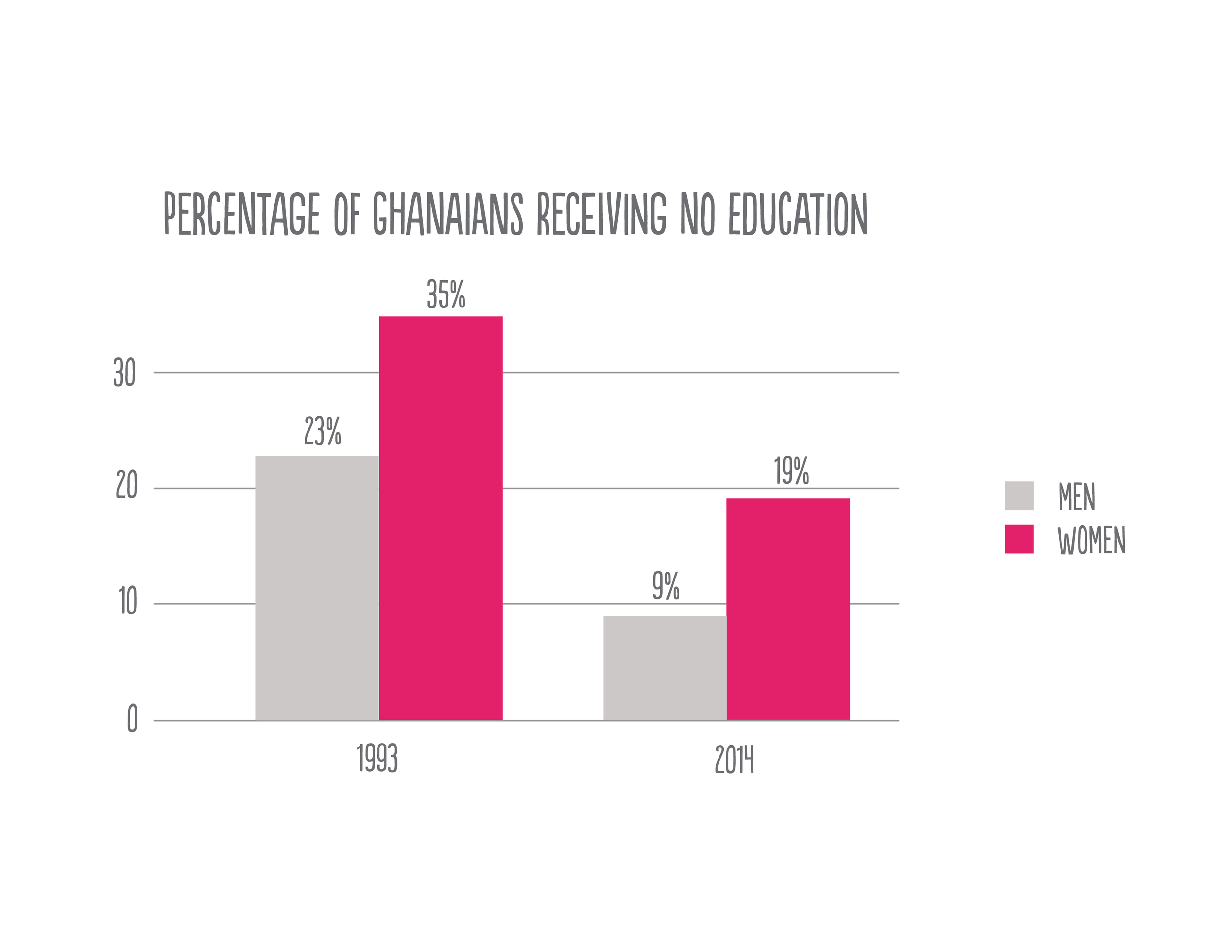 Ghana’s free high educate policy is getting more girls to complete secondary education – study
Ghana’s free high educate policy is getting more girls to complete secondary education – study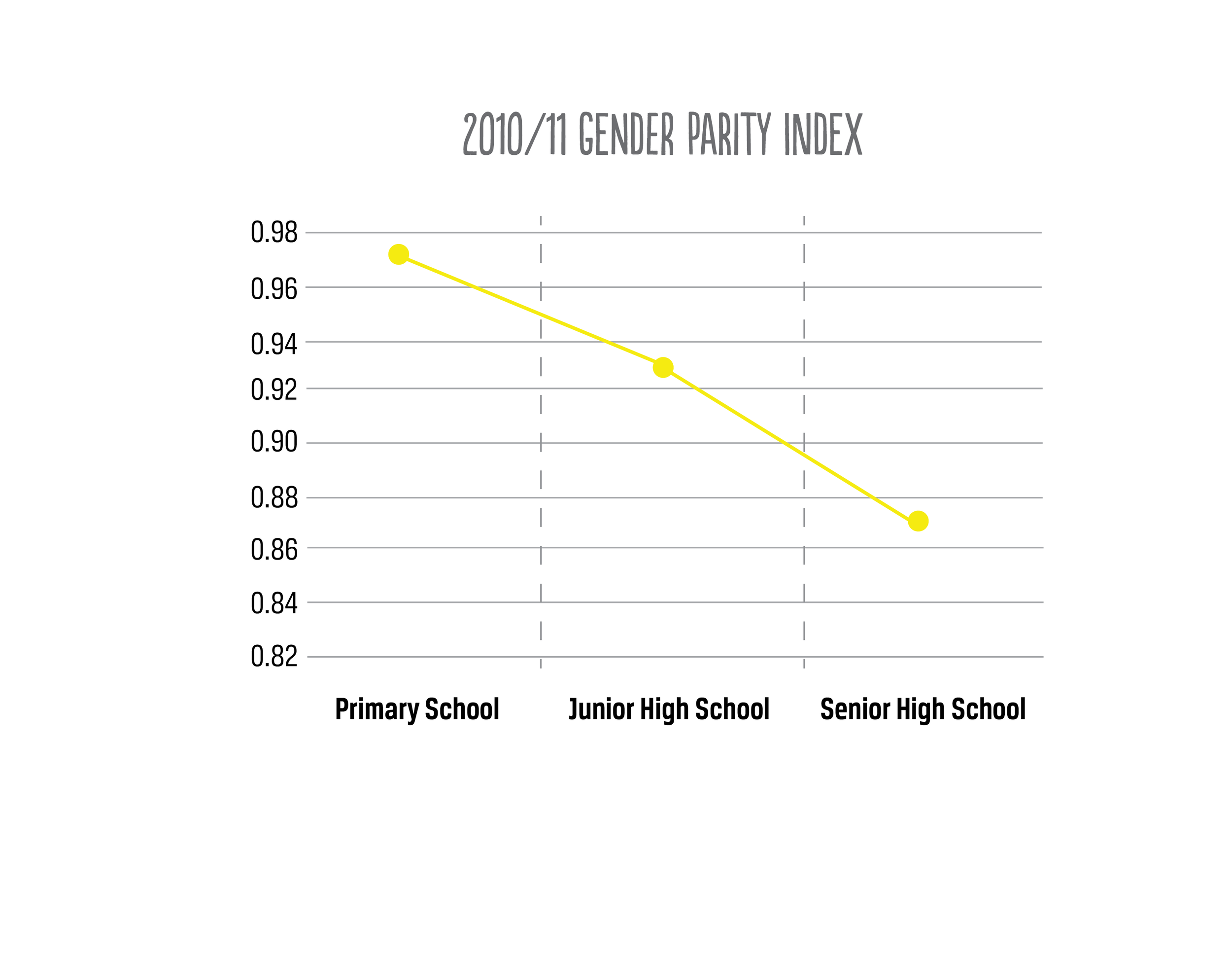 Mothers' educational and boyhood mortality in Ghana - PubMed
Mothers' educational and boyhood mortality in Ghana - PubMed
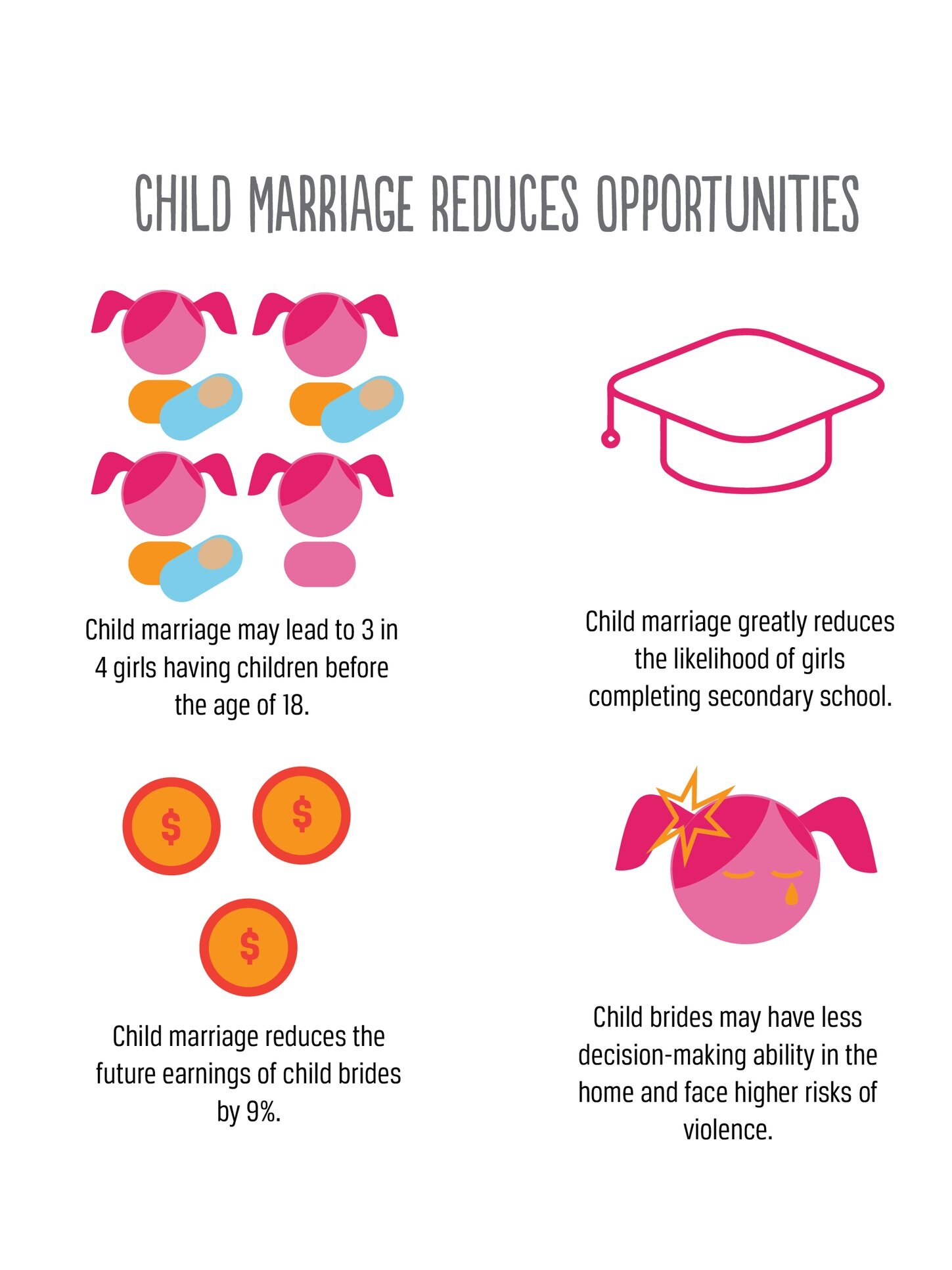 Creating one models for girls' education in Ghana
Creating one models for girls' education in Ghana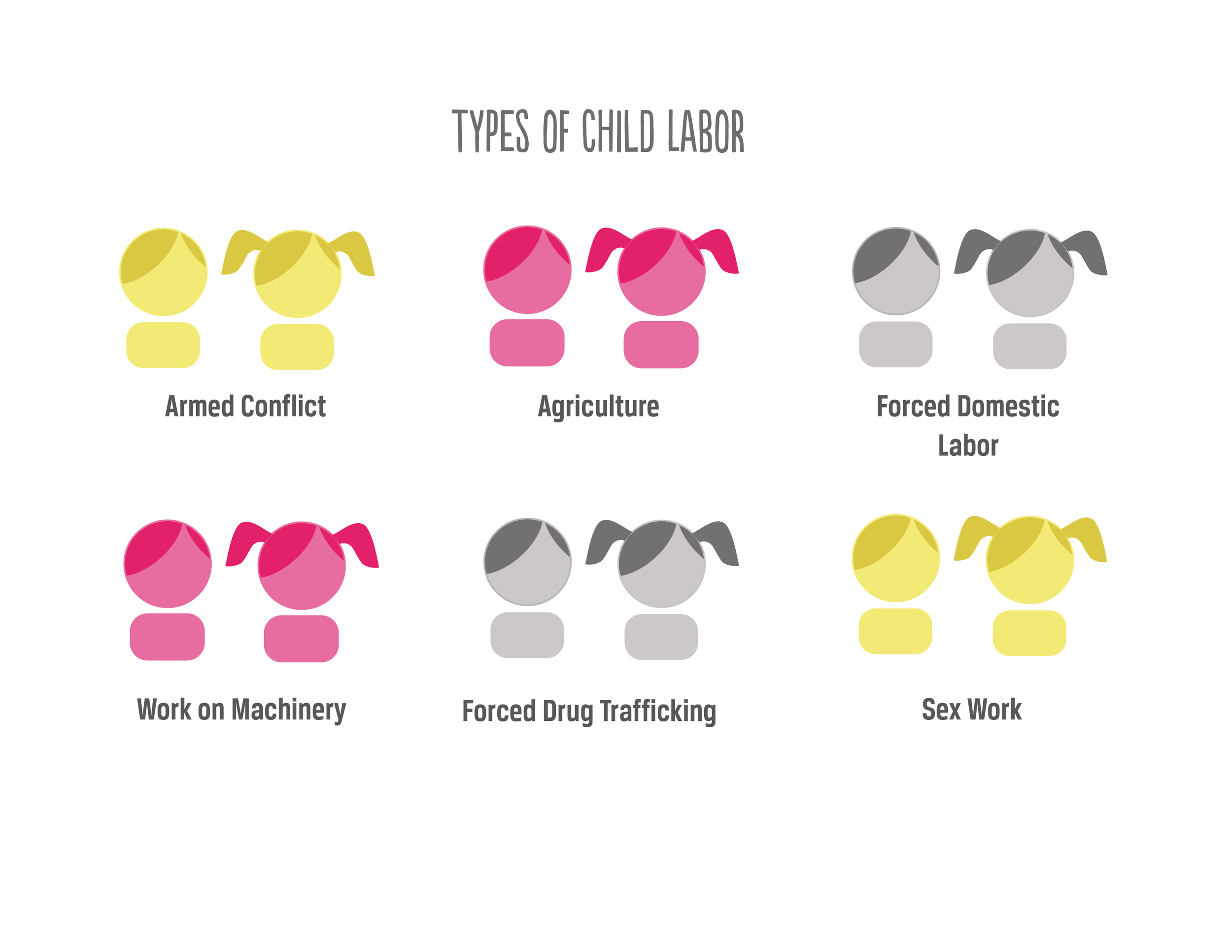 Prepared by the Girls' Education Unit Basic Teaching Division ...
Prepared by the Girls' Education Unit Basic Teaching Division ...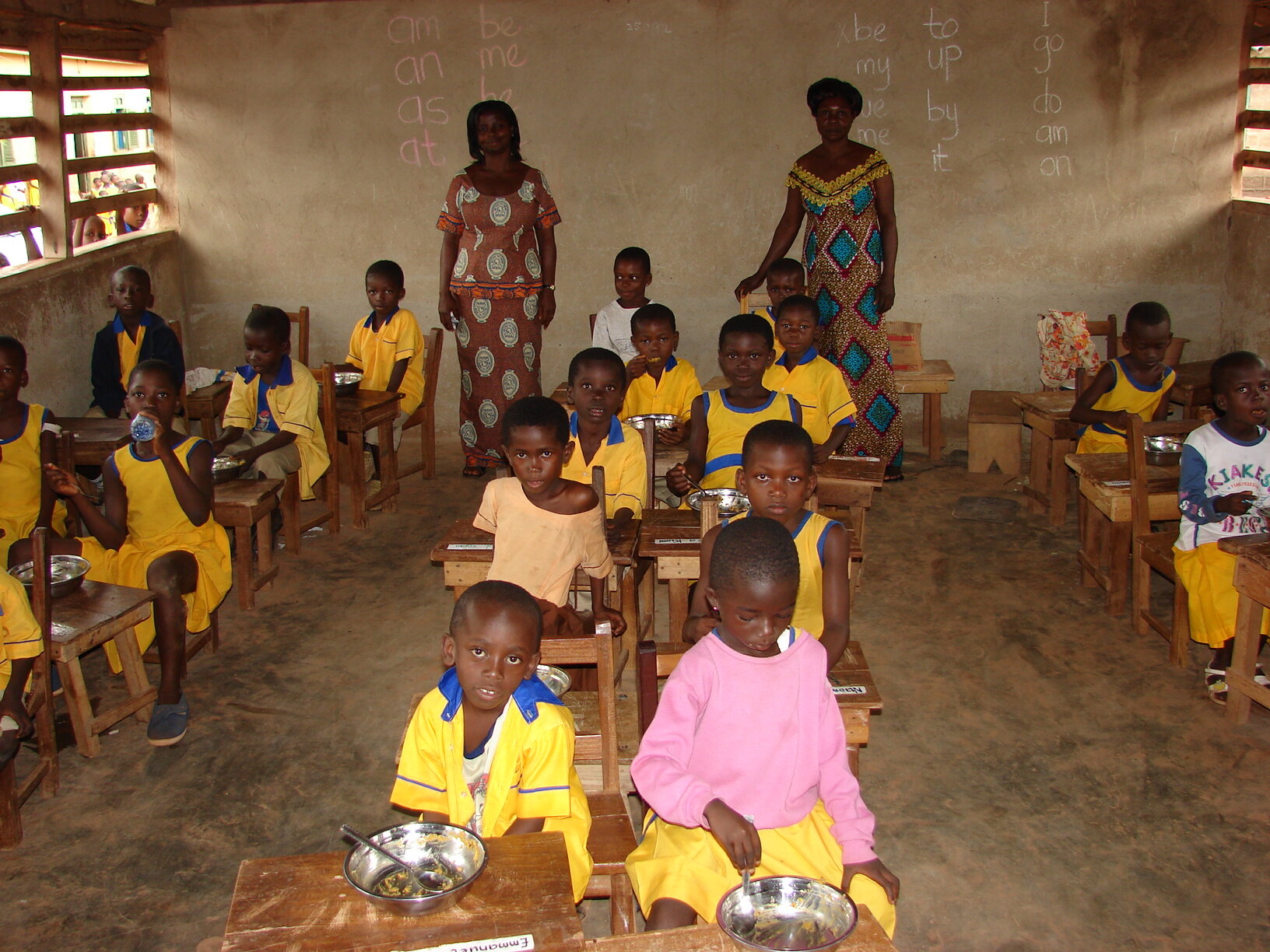 Before the English arrived, there was no formal education system. General what passed on from parents to their children. Mothers instructed their daughters and ...
Before the English arrived, there was no formal education system. General what passed on from parents to their children. Mothers instructed their daughters and ...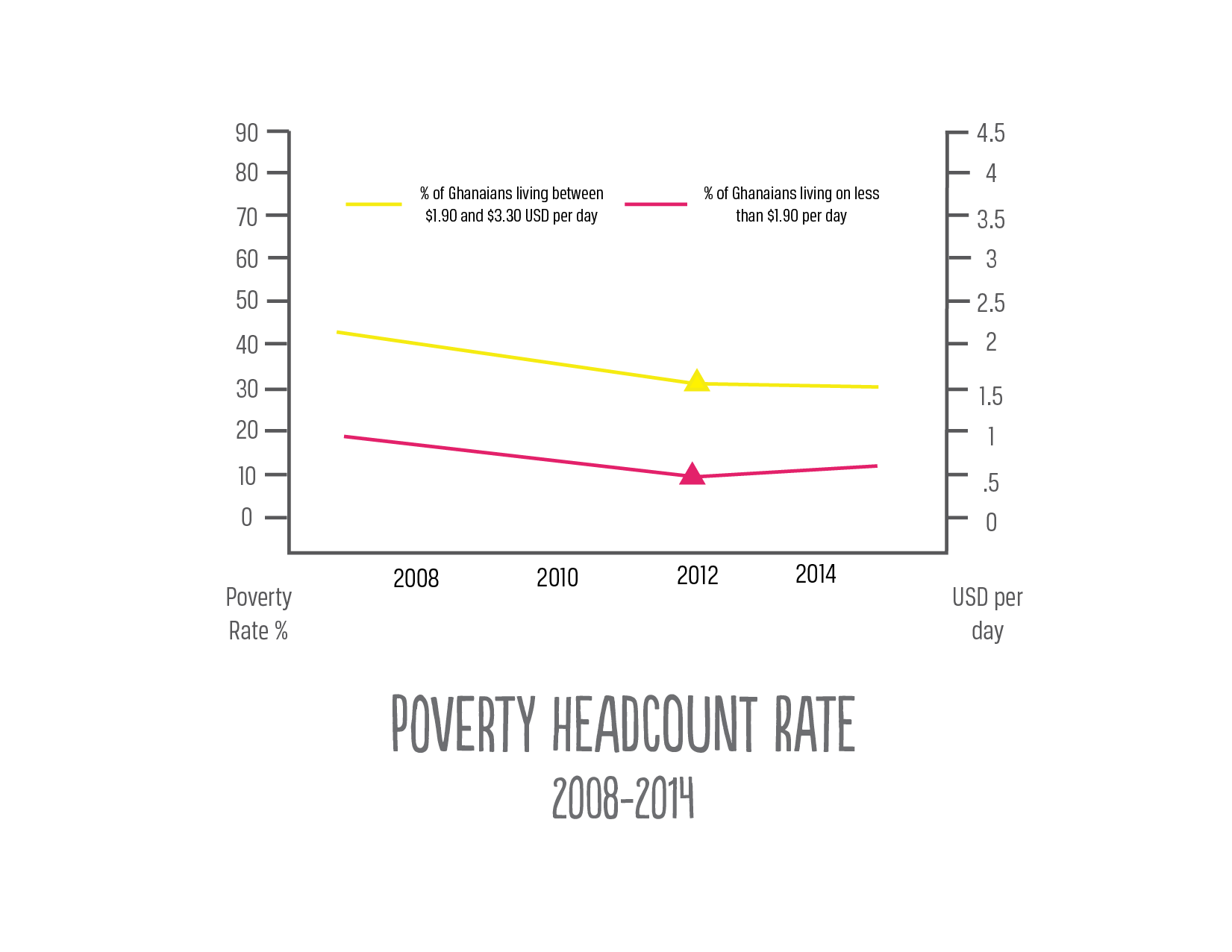 Girl-child education in the Arabic connection continues to be an important subject matter that needs to be studied. While activities to address the challenges take been made past the years, this study a...
Girl-child education in the Arabic connection continues to be an important subject matter that needs to be studied. While activities to address the challenges take been made past the years, this study a...

